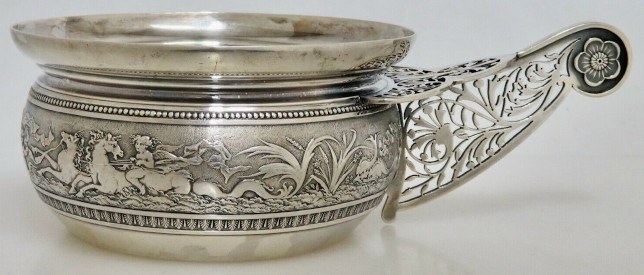A porringer is a small bowl without a cover that was used for wine, hot drinks, and porridge. English porringers had two handles where as colonial porringers generally had one handle. The name porringer is clearly derived from the word "porridger". Porridge, at the time when these bowls were made, was a thick stew.

Porringers are similar to caudle and posset bowls. The main difference is that caudle and posset bowls had lids and they were larger and deeper. Porringers were generally less than four inches deep. There are references to all of these bowls as early as the 16th century, but no examples from the 16th century can be found.
The first porringers were introduced in England around 1680 and they were popular until around 1715. These bowls were popular christening gifts during this time frame.
The earliest porringers were made of silver. Some of the later models were made of Sheffield plate or silver plate.
Value
Antique silver porringer are rare and they can sell for hundreds of dollars. Some early pieces can sell for over $1,000. Antique silver plated pieces can sell for over $100.
Sources:
The Book of Old Silver
